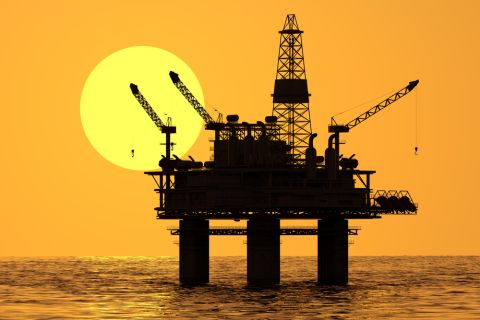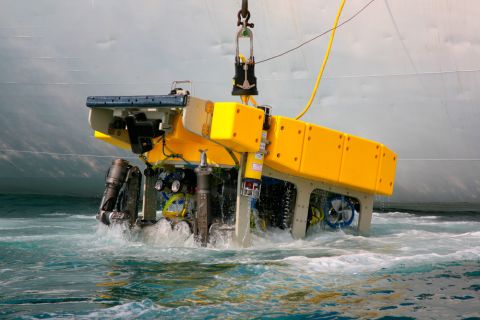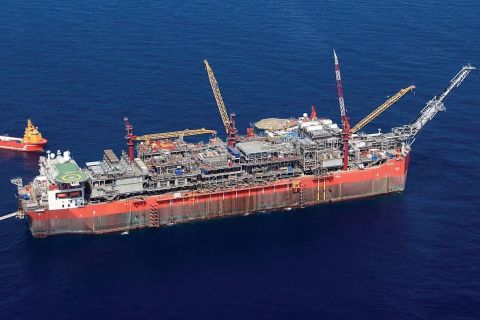Saskatchewan is enjoying renewed interest of late, in both land sales and drilling activity. The province collected C$28.98 million in bonuses in its February Crown land sale, realizing an average price of C$294 per hectare. The highest bonus was paid by Windfall Resources, the U.S. subsidiary of Calgary-based land-broker Scott Land & Lease Ltd. for a 22-section exploration license just outside the Senate Second White Specks gas pool in the extreme southwest corner of the province, reports Nickle's Petroleum Explorer. Windfall's C$3.69-million bid averaged C$649 per hectare. In addition, the province received a work commitment of C$4.3 million from Scott Land & Lease for a special exploratory permit covering 16 townships in the Chaplin area, bringing its gross proceeds to C$33.28 million. Last year, 1,930 gas wells and 1,743 oil wells were drilled in Saskatchewan, making 2004 its fourth-highest year of activity. More than 1,300 of those wells were drilled in the Swift Current region, home of the shallow Shackleton gas play. The year was also notable for a high number of exploration wells. Some 27% of the total wells drilled were exploratory; with 112 new-field wildcats, 250 new-pool wildcats and 617 outpost wells. -Peggy Williams 1 Canada Blackrock Ventures Inc. and Talisman Energy Inc., both of Calgary, are evaluating a heavy-oil discovery at Chipmunk in Alberta's Peace River oil-sands deposit. The companies have successfully drilled two vertical wells and recompleted a third vertical well, reports Nickle's Petroleum Explorer. On a combined basis, the tests have produced 960 bbl. of 11-degree-gravity oil per day from three separate Pekisko Waulsortian mound structures. The production is primary, with no steam-assist. Up to five additional tests are planned this year on a 40-square-kilometer 3-D survey the partners acquired this spring. The companies hold more than 100 sections of land in the area. 2 Venezuela PDVSA will take bids for six blocks it is offering this summer in its first license round featuring tracts in the offshore Gulf of Venezuela. Five of the blocks are offshore Zulia and the other is offshore Falcon state. If a successful bidder establishes a field with commercial potential, PDVSA has the right to back in for 35%. Under the proposed terms, a company will explore the tract and drill one well by the end of the second year. Companies are obligated to meet domestic gas demand before exporting any product, as demand for gas may triple in Venezuela during the next 20 years. PDVSA has invited 37 companies to participate in the first stage. Most major companies are on the qualified list including Algeria's Sonatrach, France's Total, Russia's Gazprom and Lukoil, South Korea's Samsung and Japan's Marubeni, Mitsubishi, Mitsui and Teikoku. 3 Brazil The Petrobras Golfinho discovery in deepwater Block B-ES-100 in the Espirito Santo Basin has been extended with results from a new well. The 3-ESS-156A encountered some 90 meters of high-quality sand with light oil. The well, about 65 kilometers offshore, was drilled in 1,322 meters of water to a total depth of 3,402 meters. The extension is 12 kilometers from the discovery well. Petrobras plans to put the field on a fast track to begin production in 2006, using an FPSO with a capacity of 100,000 bbl. of oil per day. 4 Brazil Onshore, Petrobras has reported a multi-block, heavy-oil discovery in northern Espirito Santo state. The discovery, in blocks BT-ES-12 and BT-ES-21, could add some 60 million bbl. to the company's oil reserves. After additional testing during the remainder of this year, the company plans to declare commerciality in 2006. 5 U.K. Active newcomer ATP Oil & Gas Corp. is looking at alternatives to develop its Cheviot Field (formerly Emerald Field) in blocks 2/10a and 3/11 in the North Sea. Emerald Field was shut down in 1996 after producing 16 million bbl. of oil into an FPSO. It still produced 6,600 bbl. per day when it was taken off-line. ATP, which picked up the field in the U.K.'s 21st licensing round, estimates that the field still contains 232 million bbl. of oil and 59 billion cu. ft. of gas in place. The Houston-based company completed a seismic survey late last year and is interpreting results. This year, ATP also plans the development of its Tors Field area with unmanned platforms on Garrow (Block 42/25a) and Kilmar (Block 43/22a), and work on Dutch section Block L-06d. 6 Congo Two development wells in onshore M'Boundi Field have tested high volumes of oil. French firm Maurel & Prom operates the field, and U.K. firm Burren Energy and South African company Energy Africa are its partners. Well 601 tested at an initial rate of 3,441 bbl. of oil per day on a 40/64-in. choke, and well 1001 tested at an initial flow rate of 4,000 bbl. of oil per day. The field, discovered in 2001, is on the 2,600-square-kilometer Kouilou permit. 7 Angola BP has made a deepwater discovery on Block 31, offshore Angola. The Ceres-1 was drilled in 5,358 ft. of water to a total depth of 14,220 ft. and tested at a maximum rate of 5,644 bbl. of oil per day through a 44/64-in. choke. Ceres is about 20 miles southeast of the planned Northeast Development Area, where four previous discoveries were made, and is about 19 miles northwest of the recently announced Palas discovery. BP's partners in Block 31 are the Angolan state oil company Sonangol, ExxonMobil, Statoil, Marathon Oil Corp. and Total. 8 Yemen Total's latest wells onshore Yemen resulted in two successful production tests in Kharir Field, according to partner Soco International. London-based Soco's majority-owned subsidiary Comeco Petroleum holds a 16.785% interest in the East Shabwa Development Area in Block 10. The KHA-403 well reached a total depth of 11,100 ft. on the western extension of the structure. It has produced more than 6,500 bbl. of oil during testing and is now connected to Kharir's main production facilities. The KHA-402 well reached a total depth of 11,290 ft. on the eastern end of the field on the flank of the structure. It was tested for a rate of 550 bbl. of oil per day before being shut-in for a long-term test. Other partners in the project are Occidental Petroleum and Kufpec. 9 Iran ENI has completed phases 4 and 5 of the South Pars Field development. It has installed two offshore wellhead platforms, drilled 24 gas production wells, laid two 32-in. pipelines, and built a gas-processing plant at Assaluyeh on the Persian Gulf. Eni operates the development of South Pars phases 4 and 5 and its partners are Petropars and the National Iranian Oil Co. 10 Malaysia CS Mutiara Petroleum, a 50/50 joint venture between state-owned Petronas and Shell, has made another gas discovery in Block PM301 offshore the northeast coast of Peninsular Malaysia. The Bunga Anggerik-1 well was drilled to a total depth of 5,010 ft. and encountered four gas zones. Further technical evaluation is required to determine the reserves, according to a report. Bunga Anggerik-1 is the third discovery in Block PM301, following the recent exploration successes of Bunga Kamelia and Bunga Zetung. This third discovery is 3.7 miles east of Bunga Zetung Field, which was found in July 2004. CS Mutiara Petroleum is currently embarking on an appraisal campaign and studies for the development of these three discoveries. The JV was formed in July 2001 and operates both Block PM301 and Block PM302, which are both in the area. 11 Indonesia Unocal and partner Santos Ltd. have discovered oil and gas at the deepwater Hiu Aman-1 well in the Donggala production-sharing contract area in the Kutei Basin off East Kalimantan. The well reached total depth of 4,039 meters in 14 days. Interpretation of logs and test data has resulted in an estimate of around 25 meters of net gas-prone pay. Donggala covers 3,821 square kilometers in 1,650 to 2,450 meters of water. Hiu Aman-1 is the first well in a three-well program. The well has been plugged and abandoned as per the program and the rig moved to drill the next prospect, Orca-1. 12 Australia The Hurricane-1 well in the Carnarvon Basin, offshore Western Australia, has been confirmed as a discovery by the partners involved. The co-venturers are Santos, the operator, with 31.31%; Woodside Petroleum, with 34.03%; ENI Australia, with 8.66%; Beach Petroleum, 10%; and Mosaic Oil, 6%. The test, in the WA-208-P concession, reached a total depth of 3,140 meters. Logs indicated a gross gas column of 76 meters in the primary objective of the Eliassen formation, and no gas-water contact was intersected. 13 Australia First commercial production has begun from the Santos-operated Mutineer-Exeter developments in the Carnarvon Basin. The A$440-million project is starting production three months ahead of schedule and 10% under budget. Production will be from four horizontal development wells, with the production rate expected to be 70,000 to 90,000 bbl. of oil per day during the start-up phase. Interests in the project, which is on WA-26-L and WA-27-L, are held by Santos, with 33.4%; Kufpec, 33.4%; Nippon Oil Exploration, 25%; and Woodside Petroleum Ltd., 8.2%.
Recommended Reading
SLB OneSubsea JV to Kickstart North Sea Development
2024-05-07 - SLB OneSubsea, a joint venture including SLB and Subsea7, have been awarded a contract by OKEA that will develop the Bestla Project offshore Norway.
E&P Highlights: Feb. 26, 2024
2024-02-26 - Here’s a roundup of the latest E&P headlines, including interest in some projects changing hands and new contract awards.
SLB, OneSubsea, Subsea 7 Sign Collaboration Deal with Equinor
2024-05-02 - Work is expected to begin immediately on Equinor’s Wisting and Bay Du Nord projects.
Remotely Controlled Well Completion Carried Out at SNEPCo’s Bonga Field
2024-02-27 - Optime Subsea, which supplied the operation’s remotely operated controls system, says its technology reduces equipment from transportation lists and reduces operation time.
OKEA Fast-tracking North Sea’s Brasse Tieback to Brage
2024-04-08 - OKEA expects first production in 2027 and has signed contracts with Aker Solutions, Subsea7 and OneSubsea.




